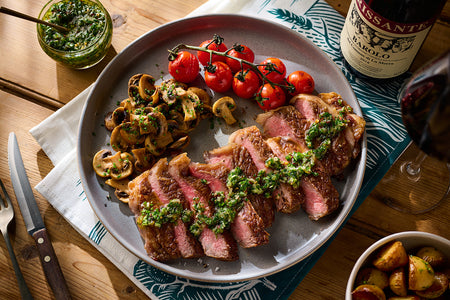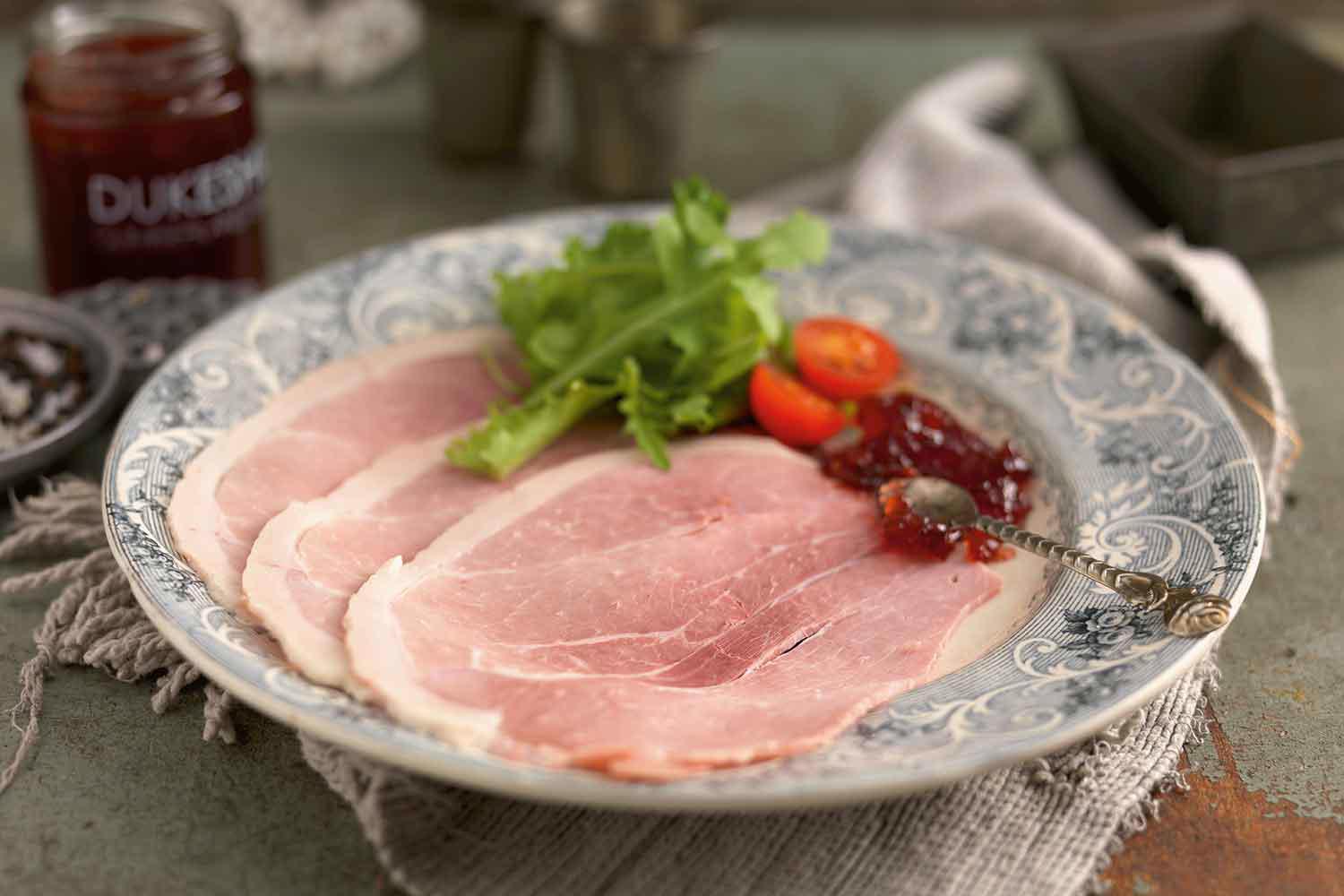Which ham cure should I choose?
-
Types of Cure
Curing is the ancient process of meat salting, a method of preservation used for centuries to keep families fed through the winter months. These days ham and bacon can either be ‘dry cured’ in salt or ‘wet cured’ through immersion in a liquid brine. Here at DukesHill, we use the dry curing method for our range of dry-cured hams and bacon, and the Wiltshire method of wet curing to produce our range of Wiltshire hams.
Dry curing is the oldest type of curing method. Traditionally farmhouses would adopt their own distinct recipe, and hang the ham or bacon in the inglenook above the fireplace.
Traditional dry curing is a time-consuming process but sadly most dry-cured ham in the UK is cured in a vacuum bag for literally a few days. However here at DukesHill each leg of pork is hand rubbed with sea salt for a period of three weeks, during which time the legs are turned every day. Then they are hung up and left to mature for at least four months during which time they develop the most outstanding flavour and texture; firm, meaty and slightly salty.
The original and most famous of the ‘wet cures’ is the traditional Wiltshire cure dating back to the 1840s when the Harris family in Wiltshire developed what was considered to be a revolutionary cure by immersing the pork in brine, producing a tender meaty texture and mild flavour. -
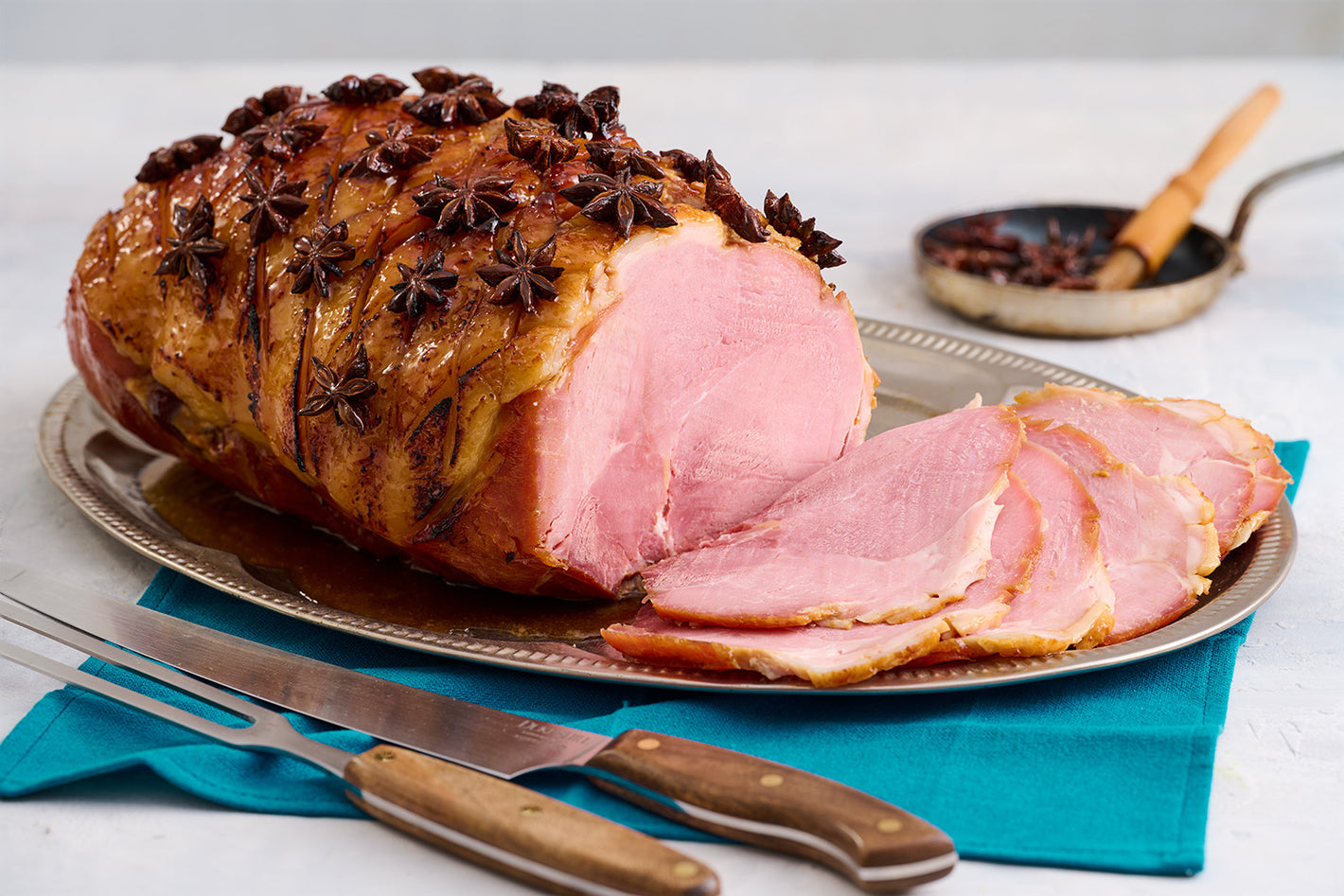
The Wiltshire Ham
Our most popular ham! Mild, moist, with a subtle sweetness. The Wiltshire Ham is available either smoked or unsmoked, bone-in or boneless.
Since time age-old, humankind has looked for ways to preserve meat to see him through times of scarcity. Through experimentation and ingenuity, we have discovered a myriad of ways of accomplishing this, from simply drying in the sun, fermentation, and of course salting. Until 1841 salting was just that – the application of dry salt to the meat – which had the effect of drying it, preserving it, and making it extremely tasty. In that year, however, Elizabeth Harris, the matriarch of a ham-curing dynasty based in Calne in Wiltshire, perfected a way of curing pork by immersing it in brine. The results of her labours were hams that were quicker to make, but more importantly, gave a product that was distinctly milder in flavour than the distinctly saltier dry-cured hams of yore.
For many years our most popular ham, the Wiltshire is cured by lengthy immersion in brine, which gives it a moist (but never wet!) texture. Our Wiltshire hams spend almost a week maturing in our own-recipe brine. Unlike other curing processes, we add a touch of unrefined brown sugar to our brine recipe to add a subtle sweetness and balance alongside the salt levels, giving a mild, subtly sweet, and delicious flavour.
The hams are then air-dried for a further week to mature and remove excess moisture. Then we steam cook them for 12 hours, allowing the fat to render and soften to provide a buttery texture.
Once cooked the hams are inspected, hand-skinned and trimmed by our expert quality manager who has over 15 years of experience curing and preparing the finest hams. This ensures the taste and appearance meet DukesHill’s highest standards. -
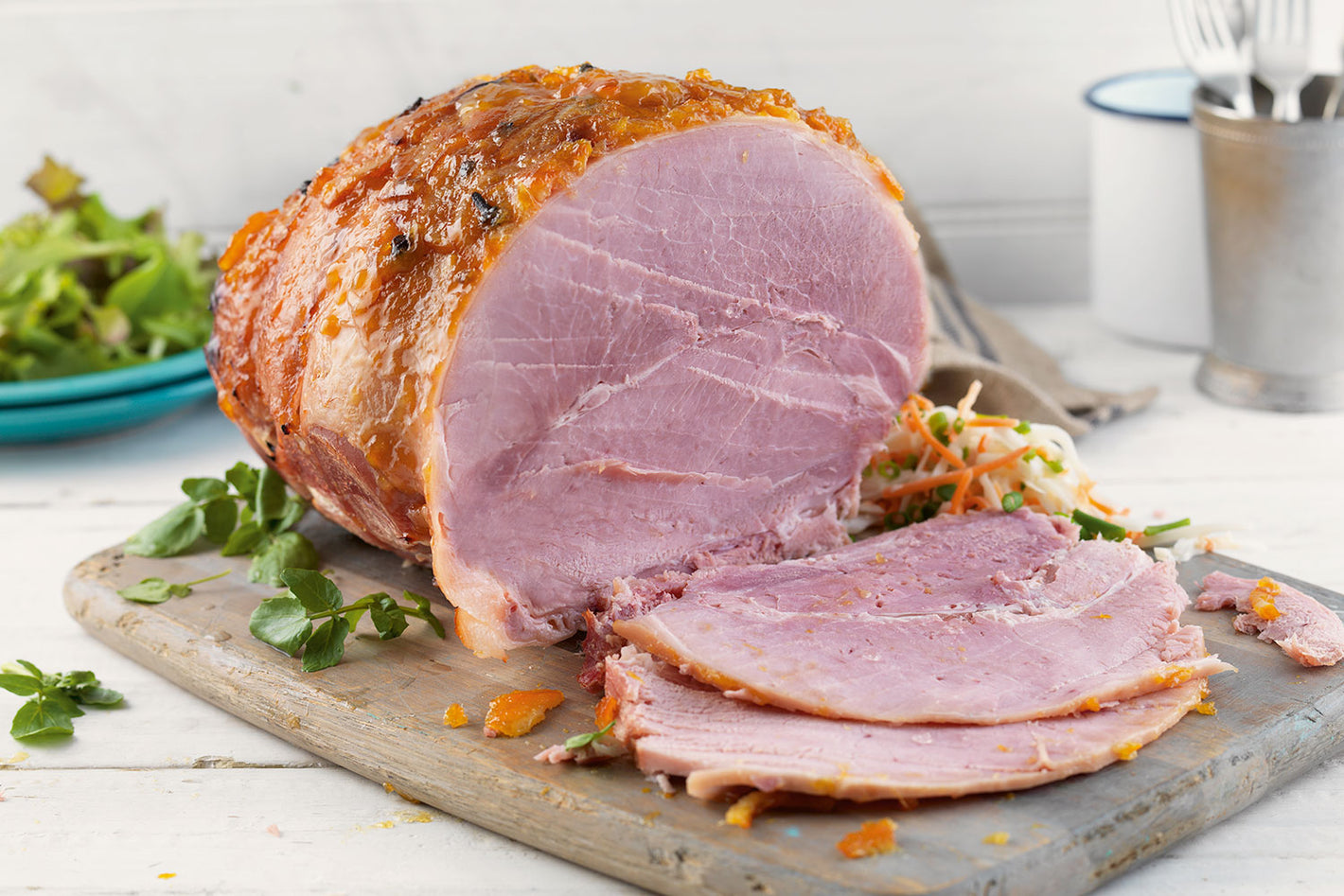
The St George's Ham
Our delectable St George’s Ham is cured in our ever-popular, mild and sweet Wiltshire brine, before baking in a glaze of spiced oranges, cinnamon, mace and cloves. The result is a deliciously mild and sweet ham with a hint of spiced orange that will delight the whole family. This ham comes bone-in or boneless in a variety of sizes and is cooked and ready to enjoy.
-
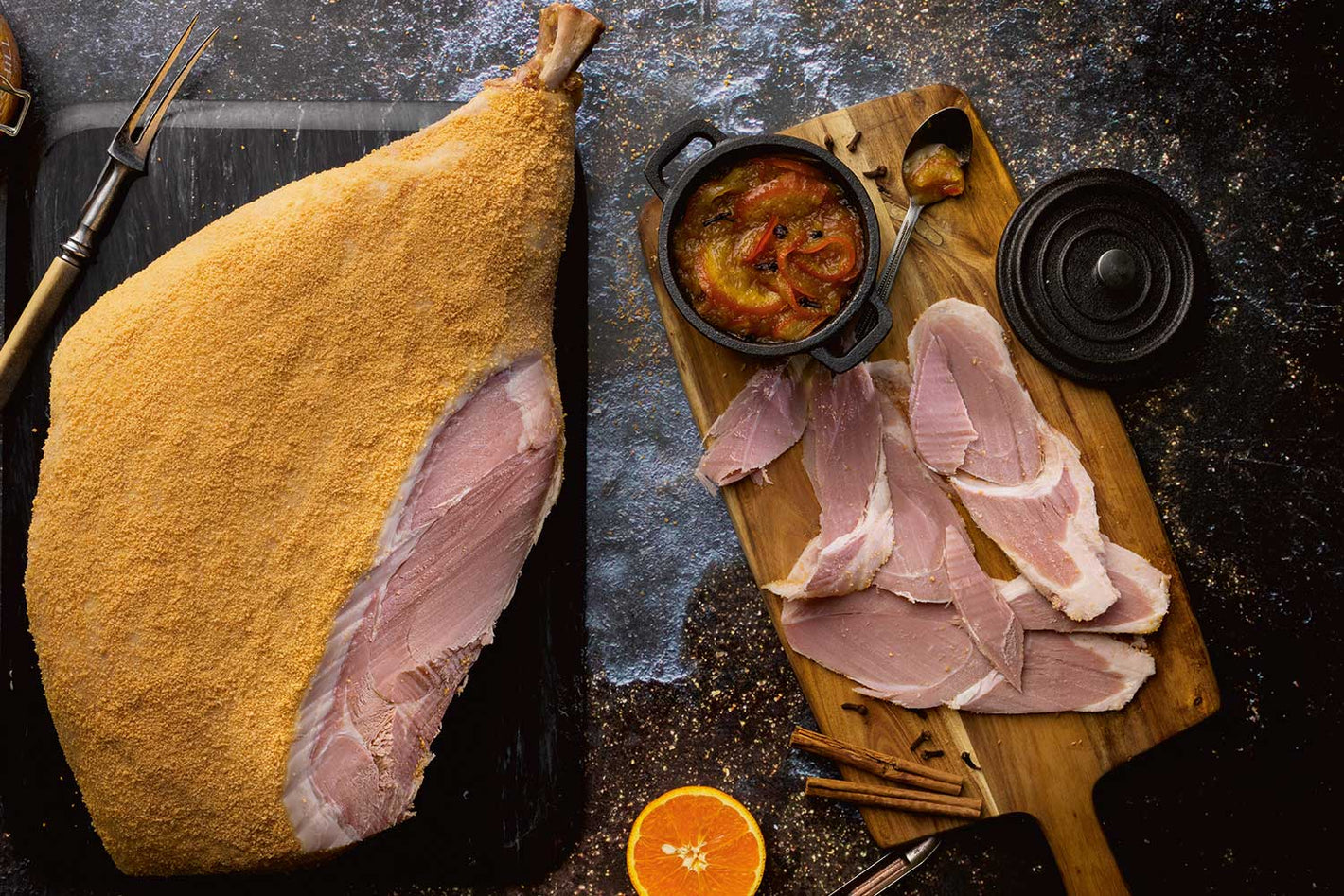
The York Ham
Our quintessential English ham is produced using traditional dry-curing methods that have remained largely unchanged for centuries. We dress each leg with a pinch of saltpetre and then cover it with a generous layer of salt. This process is repeated over several weeks before the hams are hung in special drying rooms and left to mature for several months. This time-consuming process results in a beautiful ham with an unparalleled depth of flavour, and is the original source of our coveted Royal Warrant. As a traditionally dry-cured ham, the York is a little firmer in texture and saltier than the Wiltshire and should therefore be served sliced as thinly as possible.
-
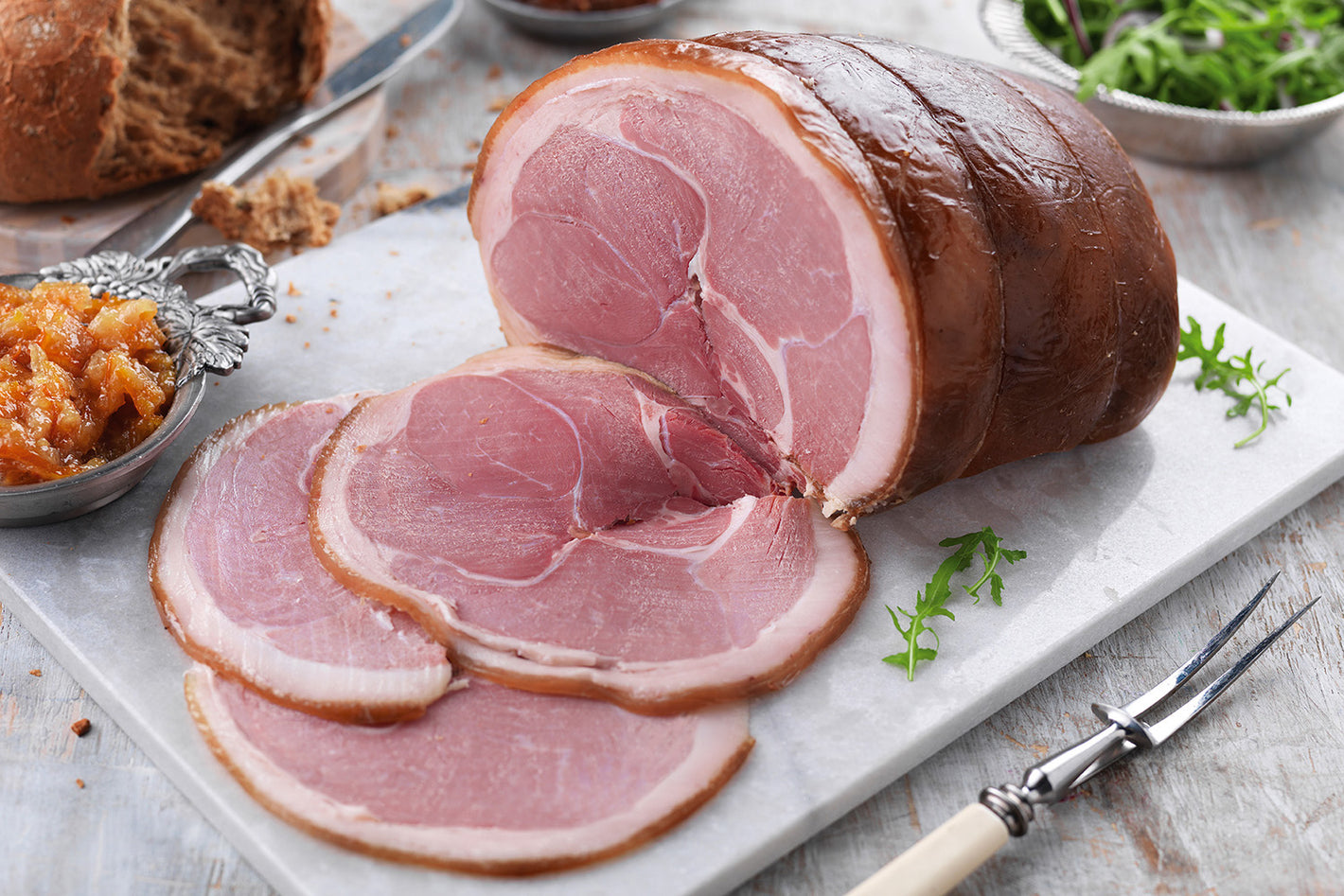
The Shropshire Black
This flavoursome ham is a direct descendent of the historic Bradenham Ham, which originated in the kitchens of Bradenham Manor, Buckinghamshire in 1781. Rumour has it that the butler fell out with his employer, Lord Bradenham, and moved to Wiltshire, taking the recipe with him. Thus the Bradenham Ham Company was born and continued to manufacture delicious hams for almost 100 years. Sadly, the company’s fortunes waned, and the recipe was passed from business to business until production ceased. Though we weren’t able to acquire the name, we did manage to recreate the recipe, and so the Shropshire Black was born. The hams are cured in the same way as our Yorks, what sets it apart, however, and gives the ham its distinctive black rind, is a fortnight spent wallowing in a special marinade of molasses, juniper berries and spices. This impressively full-flavoured ham remains a favourite of connoisseurs seeking the ultimate taste experience.
The Shropshire Black has a distinctive flavour, and we generally advise that those who enjoy strong cheeses, games and other full-flavoured foods are most likely to enjoy the Shropshire Black. As with the York, this is a densely textured ham, best served thinly sliced.
Ham FAQs
Where does your meat come from?
We take animal welfare very seriously. We believe that quality starts at the farm and that healthy pigs reared to the highest welfare standards provide the very best pork. All our pork comes from outdoor-bred British pigs where their comfort and safety are paramount.
We work with suppliers who share our commitment to responsible and sustainable farming. We are predominately a ham producer and whilst we have added other products like bacon and sausage to our portfolio, we still use a lot more “back legs” than we do the rest of the pig.
All our pork is British and sourced from RSPCA Assured farms where the pigs are well treated, and most importantly that every stage of the supply chain is regularly audited by vets and inspectors.
We take the sourcing of all our other meats just as seriously. For instance, our poultry is all produced to the highest levels of free-range standards - there is never an excuse for distressing, intensive or inhumane farming methods that cause animals to suffer.
Do you use "formed meat"?
No! Unlike most "supermarket" ham, ours is never "formed", "reformed" or "reconstituted".
There is a huge spectrum of quality available in supermarkets, but one thing is unavoidable: to get homogeneity the pork has to be “formed” into an unnatural shape. To do this, boneless pieces of meat are injected with brine (water, salts, sugars and other ingredients designed to help the meat retain water) and then “tumbled”. Imagine the world’s biggest tumble drier (without the heat!) filled with wet meat. As it is churned for several hours the brine is forced into the meat, and gradually the protein in the meat starts to dissolve, creating a slimy pink goo all over the meat. Most manufacturers are delighted by this technology as it reduces a process that used to take weeks or months into one that takes a few hours, and to them time is money!
Once this process is complete the meat can be filled into moulds of any shape the manufacturer wants (the most common and efficient for slicing being circular logs about a metre long. The logs are then cooked, and thanks to the proteinaceous properties of the goo, it sets into a firm, albeit rubbery, shape. Cheap sliced ham has a mixture of the cheapest bits of the carcass, more water and more clever chemistry aimed at getting the most protein out of the meat and the most water locked away in it; expensive formed ham will use much less water, better whole cuts of meat and fewer “nasties” generally, but the general principle of manufacture is the same.
We do not tumble our ham at DukesHill! This means that our hams come in all shapes and sizes (yes, just like the pigs they come from), and when we slice them, every slice is different. Because we haven’t relied on massaging and tumbling to extract copious amounts of soluble protein, our cooked ham doesn’t have that rubbery wobble and bite you’ll find elsewhere. It’s more like what it is…real meat!
How many will my ham feed?
A common question and one which we are somewhat reluctant to answer definitively! So much depends on who is carving, what else you are serving, and how hungry everyone is! As a rule of thumb, we suggest that a large, whole ham of around 4kg will serve 35+, and a half ham joint about 15+.
How long will my ham keep?
The “Use By” date on your ham refers to the life of the chilled ham, whilst still in its vacuum pack. Once opened, its life depends to a great extent on how it is treated. One of the main attractions of ham is that it keeps well, providing countless meals for your family and friends.
Although we use traditional cures that in the past were considered suitable for keeping a ham well for a couple of weeks at least, current legislation obliges us to advise you to consume the ham within a few days (see the label), and to freeze any leftovers for future use.
A number of factors can shorten the life of the ham, particularly leaving it out in a warm environment. If your ham has served a spell on a buffet table for a few hours in a warm room or marquee for example, its capacity to keep will be considerably reduced.
During storage, the cut the face of the ham may become a bit tired or dry out. Under normal circumstances, you should be able to cut this away until you reach fresh ham again. Your nose and common sense can guide you.
